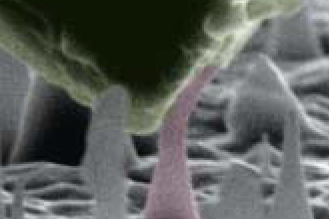Energetic materials stabilised with detonation nanodiamonds

Scientists from China have coated the high energy explosive RDX (hexahydro-1,3,5-trinitro-1,3,5-triazine) with nanodiamonds in an attempt to make safer explosives.
The group, led by Yi Tong, from the Beijing Institute of Technology, prepared detonation nanodiamonds by detonating a mixture of TNT and RDX in a closed metallic chamber. Detonation nanodiamonds are known to have excellent mechanical properties, including high thermal conductivity and electrical resistivity, whilst being chemically reactive but also environmentally benign. RDX was coated with different proportions of nanodiamonds to try to stabilise the explosive. This is important as you don’t want explosives to detonate if they are accidently heated when in storage.
By studying the thermodynamics of the resulting composites, the group found that nanodiamond coatings of between 1/7 and 1/5 of the mass of the RDX led to composites that were more stable than RDX alone, but that were more reactive than composites with thinner coatings. They also found that increasing the nanodiamond ratio to more than 1/3 of the mass of the RDX hindered the decomposition of the material.
‘A key aspect of energetic material formulation is the compatibility of the individual ingredients, which affects the explosive handling safety and long-term storage viability,’ says Jennifer Gottfried, an expert in nanodiamonds and energetic materials at the US Army Research Laboratory. ‘The discovery that thicker nanodiamond coatings hinder the decomposition of the RDX will have important implications for the development of nanodiamond-coated energetic materials.’
The future challenges for this work include testing the detonation performance of these composite materials and understanding how impurities might affect their performance.
References
This paper is free to access until 20 August 2014. Download it here:
Y Tong, R Lui, T Zhang, Phys. Chem. Chem. Phys., 2014, DOI: 10.1039/c4cp02237h











No comments yet